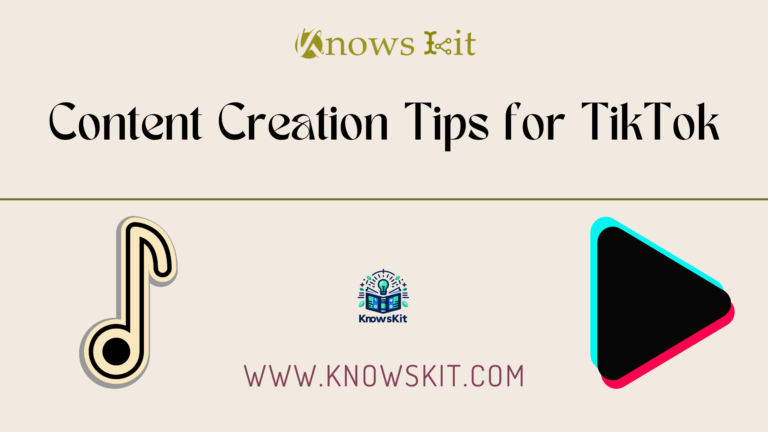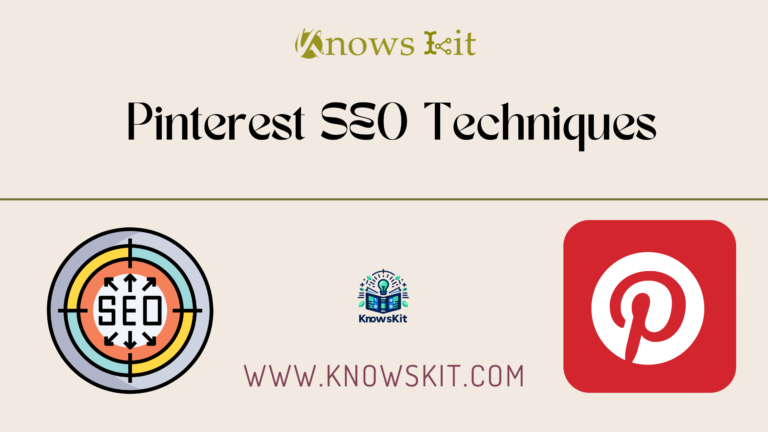In an era where social media channels evolve into pivotal business platforms, conducting a thorough social media audit is not just beneficial—it’s essential. Whether you’re a budding entrepreneur, a seasoned marketer, or simply looking to refine your brand’s online presence, understanding the ins and outs of a social media audit can transform your digital strategy. This guide delves deep into each step, offering valuable insights and actionable tips to help you navigate this crucial process.
What is a Social Media Audit?
A social media audit is a systematic examination of social media data to assess how well a brand’s presence aligns with its business goals. It involves scrutinizing various aspects, such as engagement metrics, audience demographics, and the overall effectiveness of social media strategies.
Why is it Crucial?
In today’s digital-first world, a brand’s social media presence can significantly impact its success. Regular audits can reveal strengths, uncover hidden opportunities, and highlight areas needing improvement, ensuring that your social media efforts are as effective as possible.
![Social Media Audit [2024 Exquisite Guide] 2 Checklist titled 'Social Media Audit Steps' with items like profile analysis and audience insights.](https://www.knowskit.com/wp-content/uploads/2024/01/social-media-audit-checklist-1024x585.png)
Understanding the Power of a Social Media Audit
In today’s digital age, a social media audit is not just a routine check; it’s a strategic necessity for any brand seeking to make a significant impact online. Imagine it as a deep dive into your social media ocean, where you explore the depths of your digital presence, uncover hidden treasures of data, and navigate through the currents of online interaction.
Why a Social Media Audit is Indispensable
The digital landscape is a constantly evolving arena. With new platforms emerging and algorithms changing, what worked yesterday might not yield the same results today. A social media audit helps you stay abreast of these changes. It offers a clear picture of your social media health, revealing how your brand resonates with the audience, the effectiveness of your engagement strategies, and the ROI of your social media campaigns. In essence, it’s about understanding your digital footprint from an eagle’s eye view and aligning it with the ever-evolving online ecosystem.
Understanding the Basics of a Social Media Audit
![Social Media Audit [2024 Exquisite Guide] 3 Social Media Audits](https://www.knowskit.com/wp-content/uploads/2024/01/image-51-1024x653.png)
Decoding the Anatomy of a Social Media Audit
A comprehensive social media audit is built on four pillars:
- Profile Analysis: This is the cornerstone of your audit. It involves a meticulous examination of all your social media profiles. Are they complete? Do they accurately represent your brand identity? Consistency across platforms in terms of logos, bios, and messaging is crucial for brand recognition and trust. It’s like ensuring all chapters of your story speak the same language.
- Audience Analysis: Here, you dive into who is following you. This isn’t just about numbers but understanding the demographics, interests, and online behaviors of your audience. It’s about uncovering who they are, what they like, and how they interact with your brand. This insight is invaluable in tailoring your content to resonate with your audience.
- Content Analysis: Content is king in the digital world. This step is about evaluating the quality, relevance, and performance of what you post. Are your posts engaging? Do they spark conversations? Are they aligned with your brand’s values and goals? Analyzing your content’s performance helps in fine-tuning your content strategy to ensure it strikes the right chord with your audience.
- Engagement Analysis: This is where you measure the impact of your content. How are people interacting with your posts? Are they liking, commenting, sharing, or just scrolling past? Engagement metrics are a direct reflection of how well your content resonates with your audience. They are the pulse that keeps your social media heart beating.
Unveiling the Benefits
![Social Media Audit [2024 Exquisite Guide] 4 Professional analyzing social media audit data with graphs and metrics on multiple screens.](https://www.knowskit.com/wp-content/uploads/2024/01/in-depth-social-media-data-analysis-1024x585.png)
The benefits of a well-executed social media audit are manifold. For one, it enhances audience engagement by providing insights into what content works. It helps in refining your content strategy, ensuring that your efforts align with your audience’s interests and preferences. Moreover, it aids in targeting the right demographics, ensuring that your social media efforts reach the right eyes and ears. Lastly, it optimizes the ROI from your social media campaigns, ensuring that every post, tweet, or update contributes to your brand’s growth and visibility.
Preparing for Your Social Media Audit
Laying the Groundwork for a Successful Audit
Before embarking on the audit journey, it’s essential to lay a solid foundation. This preparation phase is crucial in setting the stage for a fruitful audit.
Setting Clear Goals
Begin with the end in mind. What do you hope to achieve through this audit? Goals could range from increasing brand awareness and boosting engagement rates to understanding audience behavior more deeply. Clear objectives will not only guide your audit but also help in measuring its success.
Inventory of Social Media Accounts
Catalog all your social media accounts, including the less active ones. This comprehensive inventory should include everything from your mainstays like Facebook and Instagram to the more niche platforms like Pinterest or LinkedIn. It’s vital to have a holistic view of your online presence to ensure that no stone is left unturned during the audit.
Essential Tools and Resources
The right set of tools is like a compass guiding you through the audit. Analytics tools like Google Analytics provide insights into how social media drives traffic to your website. Social media management tools like Hootsuite or Buffer offer a consolidated view of your social media activities. Content analysis tools like BuzzSumo can help in understanding the performance of your content across different platforms.
Analyzing Your Social Media Presence
![Social Media Audit [2024 Exquisite Guide] 5 Social Media Audits](https://www.knowskit.com/wp-content/uploads/2024/01/image-52-1024x538.png)
Deep Dive into Your Digital Identity
Analyzing your social media presence is akin to looking into a mirror. It reflects the effectiveness of your digital strategies and the resonance of your brand identity across platforms.
Profile and Brand Consistency Check
Start by scrutinizing each of your social media profiles. Are they complete with all necessary information like bio, contact details, and links to your website? Is your branding consistent across platforms? This includes logos, taglines, and overall messaging. Consistency in your digital persona builds a cohesive brand image that is easily recognizable by your audience.
Demographic Dive
Understanding your audience is crucial. Who are your followers? What are their age groups, geographical locations, interests, and online behaviors? This demographic analysis helps tailor your content and campaigns to better suit your audience’s preferences, leading to higher engagement and loyalty.
Content Quality Assessment
Now, turn your focus to the content. Analyze its quality, relevance, and alignment with your brand’s values and objectives. Are your posts engaging, informative, and well-received? Do they provoke thought, inspire action, or educate your audience? High-quality content is the cornerstone of a successful social media strategy.
Key Metrics to Consider
Metrics provide a quantifiable measure of your social media performance. Key metrics to track include:
- Engagement rates (likes, comments, shares)
- Reach and impressions
- Click-through rates (CTR)
- Follower growth trends
Engagement and Performance Analysis
![Social Media Audit [2024 Exquisite Guide] 6 Colorful infographic illustrating the essential steps of a social media audit, including profile and audience analysis.](https://www.knowskit.com/wp-content/uploads/2024/01/social-media-audit-step-by-step-infographic-1024x585.png)
Gauging the Pulse of Your Social Interactions
This section dives into the heart of your social media strategy – engagement and performance. Here, you analyze how your audience interacts with your content and the impact of your social media activities.
Measuring Engagement Across Different Platforms
Each social media platform has its unique way of engaging users. Compare engagement metrics across platforms to understand where your brand resonates the most. Look at likes, comments, shares, and overall interaction rates. This information is vital in pinpointing what type of content sparks the most interest and on which platforms.
Analyzing Follower Growth and Trends
Follower growth is a key indicator of your brand’s appeal and reach. Track your follower growth over time to identify trends and patterns. Is there a particular campaign or content type that drove a spike in followers? Understanding these trends helps in strategizing for future growth.
Evaluating the Performance of Posts and Campaigns
Delve into the performance of individual posts and campaigns. Analyze which posts garnered the most engagement and why. Was it due to the content type, posting time, or audience targeting? Understanding these nuances enables you to replicate successful strategies and tweak underperforming ones.
Expert Insight
“Engagement metrics are the true indicators of your social media strategy’s effectiveness,” says Jane Doe, a seasoned social media strategist. “They tell you not just who is seeing your content, but who is interacting with it and how.”
Competitive Analysis
![Social Media Audit [2024 Exquisite Guide] 7 Diverse team engaged in social media strategy meeting with analytics display.](https://www.knowskit.com/wp-content/uploads/2024/01/collaborative-social-media-strategy-session-1024x585.png)
Navigating the Competitive Social Landscape
In the dynamic world of social media, understanding your competition is as crucial as understanding your audience. A competitive analysis provides insights into where you stand in the digital arena compared to your rivals.
How to Conduct a Social Media Competitive Analysis
Begin by identifying your main competitors. These could be businesses offering similar products or services, targeting similar audiences, or occupying the same industry space. Once identified, analyze their social media presence. Look at their content strategy, engagement rates, follower growth, and how they interact with their audience.
Key Metrics for Competitive Comparison
- Engagement Rates: How well are competitors’ audiences interacting with their content?
- Follower Growth Rate: How rapidly are competitors gaining new followers?
- Content Quality and Frequency: How often do competitors post, and what is the perceived quality of their content?
- Brand Messaging Consistency: Are competitors maintaining a consistent brand voice across their platforms?
Leveraging Insights for Strategic Planning
Use the insights gained from your competitor analysis to inform your strategy. Perhaps there’s an untapped audience segment your competitors are overlooking, or maybe there’s a content format they’re using effectively that you haven’t explored. These insights can be a goldmine for strategic innovation.
Optimizing Your Social Media Strategy
![Social Media Audit [2024 Exquisite Guide] 8 Social Media Audits](https://www.knowskit.com/wp-content/uploads/2024/01/image-53-1024x652.png)
Turning Insights into Action
The end goal of a social media audit is not just to gather information but to use it to refine and optimize your strategy. This section focuses on transforming audit findings into actionable strategies.
Learning from Audit Findings
Review the data and insights gathered from your audit. Identify areas for improvement and opportunities for growth. Perhaps your audit revealed a gap in engaging with a particular demographic, or maybe it highlighted the need for more video content.
Strategic Adjustments Table
| Audit Finding | Suggested Adjustment |
|---|---|
| Low engagement on posts | Increase interactive content like polls and Q&As |
| High engagement on educational content | Develop more how-to guides and tutorials |
| Slow follower growth | Reassess hashtag strategy and influencer collaborations |
Best Practices for Continuous Improvement
- Regularly revisit and update your social media strategy based on ongoing audit findings.
- Stay adaptable and open to experimenting with new platforms and content types.
- Foster a culture of continuous learning and improvement within your team.
Reporting and Utilizing Audit Findings
![Social Media Audit [2024 Exquisite Guide] 9 Close-up of a person conducting a detailed analysis of various social media icons.](https://www.knowskit.com/wp-content/uploads/2024/01/detailed-social-media-platform-analysis-1024x585.png)
Crafting a Roadmap for Digital Success
The culmination of your social media audit is more than a collection of data and metrics; it’s a roadmap guiding your future strategies. This section emphasizes the importance of effectively reporting and utilizing the findings from your audit.
Creating a Comprehensive Social Media Audit Report
A well-crafted audit report should succinctly summarize your findings, providing clear insights and actionable recommendations. Include key metrics, areas of strength, potential for improvement, and specific suggestions for strategy refinement. This report serves as a valuable document for aligning your team and stakeholders with your future social media strategy.
Communicating Findings to Stakeholders
Present your findings in a manner that is both informative and engaging. Use visuals like charts and graphs to make the data more accessible. Tailor your presentation to your audience, ensuring that key decision-makers understand the impact of these insights on the business’s overall goals.
Tools and Resources for Social Media Audits
Equipping Yourself with the Right Arsenal
In the ever-evolving landscape of social media, having the right tools at your disposal can make a significant difference in the effectiveness of your audit.
Top Tools for an Effective Audit
There are numerous tools available for social media auditing, each offering unique features:
- Sprout Social: Excellent for comprehensive analytics and reporting.
- Agorapulse: Useful for social listening and engagement tracking.
- Google Analytics: Essential for tracking social traffic to your website.
Choosing Between Free and Paid Tools
Deciding between free and paid tools depends on the scale of your business and the depth of analysis required. While free tools provide basic insights, paid tools offer more in-depth analytics and customization options.
Tool Comparison Table
| Tool | Характеристики | Best For |
|---|---|---|
| Sprout Social | Detailed analytics, reporting, scheduling | Medium to large businesses |
| Agorapulse | Social listening, engagement tracking | Small to medium businesses |
| Google Analytics | Website traffic analysis | All business sizes |
Avoiding Common Pitfalls in Social Media Audits
![Social Media Audit [2024 Exquisite Guide] 10 Detailed graphs illustrating key social media performance metrics like engagement and follower growth.](https://www.knowskit.com/wp-content/uploads/2024/01/social-media-performance-metrics-analysis-1024x585.png)
Navigating the Pitfalls of Digital Auditing
A social media audit, while invaluable, comes with its share of challenges and pitfalls. Awareness and preparedness are key to avoiding these common mistakes.
Typical Mistakes to Avoid During a Social Media Audit
- Ignoring Smaller Platforms: Don’t overlook less popular or niche platforms. Sometimes, these can offer unique opportunities for engagement.
- Focusing Solely on Quantitative Metrics: While numbers are important, qualitative insights like user comments and sentiment are equally crucial.
- Failure to Regularly Update the Audit Strategy: Social media is dynamic. Regular updates to your audit strategy are essential to stay relevant.
Ensuring Accuracy and Objectivity in Your Analysis
Maintain a balanced approach during your audit. Avoid confirmation biases and base your conclusions on comprehensive data analysis. Remember, the goal is to gain an accurate understanding of your social media performance, not just to validate preconceived notions.
Expert Opinion
“A successful social media audit balances quantitative data with qualitative insights, offering a holistic view of your digital presence,” shares John Smith, Digital Marketing Analyst.
The Future of Social Media Audits
![Social Media Audit [2024 Exquisite Guide] 11 Social Media Audits](https://www.knowskit.com/wp-content/uploads/2024/01/image-54-1024x572.png)
Adapting to the Ever-Changing Social Landscape
The world of social media is constantly evolving, and so are the strategies for effective auditing. This final section discusses how to stay ahead in the ever-changing social media landscape.
Evolving Social Media Trends
Keep an eye on emerging trends in social media, such as the rise of new platforms, changes in user behavior, and advancements in analytics technology. Adapting your audit strategy to these trends is crucial for maintaining a competitive edge.
Anticipating Future Changes
Stay proactive by anticipating future trends and changes. For instance, consider the growing influence of AI and machine learning in personalizing user experiences on social platforms. Incorporating these elements into your audit strategy can provide a more nuanced understanding of your social media performance.
Continued Importance of Social Media Audits
Despite the changing landscape, the core importance of social media audits remains unchanged. They are pivotal in ensuring that your social media strategy remains effective, relevant, and aligned with your business objectives.
ЧАСТО ЗАДАВАЕМЫЕ ВОПРОСЫ
What is the primary purpose of a social media audit?
Identify Strengths and Weaknesses: To assess the effectiveness of your current social media strategy.
Brand Consistency: Ensure consistent messaging and branding across all platforms.
Audience Insights: Gain a deeper understanding of your audience demographics and preferences.
Content Effectiveness: Evaluate which types of content are performing best.
Competitive Analysis: Compare your social media performance with competitors.
What key metrics should I focus on during a social media audit?
Engagement Rates: Likes, comments, shares, and overall interaction with your content.
Follower Growth: The rate at which your follower count is increasing.
Reach and Impressions: How far your content is spreading and how often it’s seen.
Click-Through Rates: The frequency at which people are clicking on links in your posts.
Conversion Rates: How effectively your social media efforts lead to desired actions, like sales or sign-ups.
How can I track the ROI of my social media efforts?
Set Clear Goals: Define what ROI means for your campaign (e.g., sales, leads, traffic).
Use Analytics Tools: Tools like Google Analytics can track website traffic originating from social media.
Monitor Conversions: Track conversions through dedicated landing pages or UTM parameters.
Engagement to Sales Funnel: Analyze how engagement metrics correlate with sales or leads.
Are there any tools specifically recommended for a social media audit?
Analytics Tools: Google Analytics, Facebook Insights, Twitter Analytics.
Management Tools: Hootsuite, Sprout Social, Buffer for scheduling and analysis.
Content Analysis: BuzzSumo for understanding content performance.
Competitor Analysis Tools: SEMrush, and Ahrefs for competitive insights.
How do I analyze competitor’s social media strategy?
Identify Competitors: Determine who your direct competitors are on social media.
Analyze Content: Look at the type, frequency, and engagement of their content.
Engagement Metrics: Evaluate their follower growth, engagement rates, and audience interaction.
Innovative Strategies: Take note of any unique strategies or campaigns they are implementing.
How can a small business benefit from a social media audit?
Resource Optimization: Identify the most effective platforms and content types for your niche.
Audience Engagement: Understand how to better engage with your audience.
Competitive Edge: Learn from competitors and identify unexploited opportunities in your market.
Cost-Effective Strategy: Streamline your social media efforts for maximum impact with minimal investment.
Заключение
Reflecting on the Journey of Social Media Auditing
As we conclude our comprehensive guide on conducting a social media audit, it’s important to reflect on the journey we’ve undertaken. From understanding the basics to diving deep into analytics and emerging trends, this audit is not just a process but a strategic tool that continuously shapes and refines your social media presence.
The Enduring Value of Social Media Audits
Remember, a social media audit is not a one-time task but an ongoing process of adaptation and improvement. It’s an essential practice that keeps your brand relevant, engaging, and aligned with your audience’s evolving preferences in the ever-changing digital landscape.
Final Words of Encouragement
Embrace the insights you’ve gained, apply the strategies you’ve learned, and watch as your social media presence flourishes. The digital world is your oyster, and a well-conducted social media audit is the pearl of wisdom that guides your journey to online success.
More Reference:-
https://journal.politeknik-pratama.ac.id/index.php/JIAB/article/view/85

![Social Media Audit [2024 Exquisite Guide] 1 Checklist titled 'Social Media Audit Steps' with items like profile analysis and audience insights.](https://www.knowskit.com/wp-content/uploads/2024/01/social-media-audit-checklist.png)





